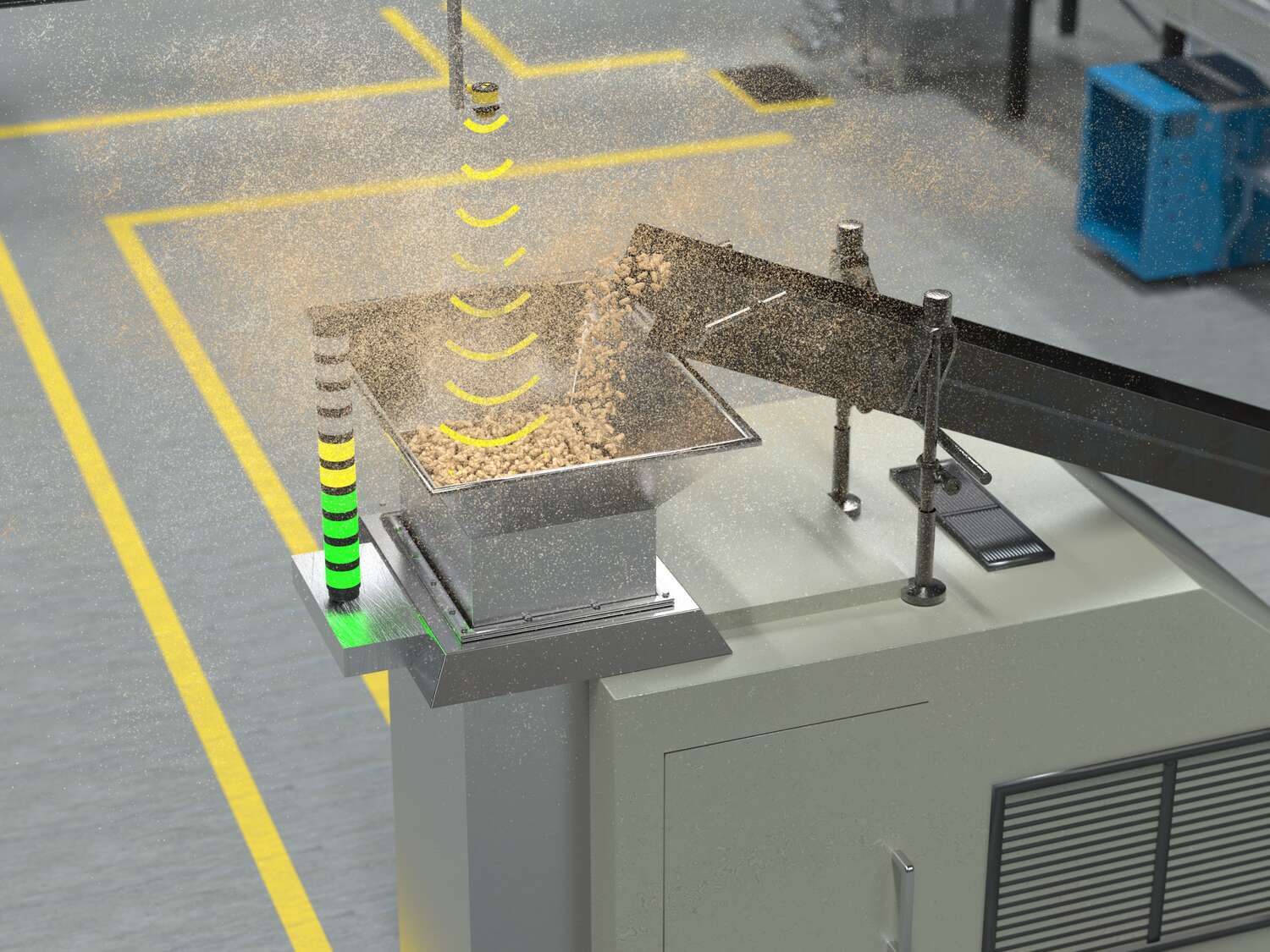Measuring Hopper Fill Levels with Radar

T30R radar sensor placed above a dry hopper bin. A connected Banner tower light provides a bright visual indication of the detected fill level.
Equipping a production-line hopper with an appropriate sensor to measure fill level helps ensure that processes operate smoothly, evenly, and continuously.
Some dry materials that hoppers collect and distribute release dust or other particles into the air, which can cause optical and ultrasonic sensors to make detection errors.
The T30R series of radar sensors emit high-frequency radio waves to identify hopper contents for accurate measurement, even in the presence of heavy airborne dust or particulate matter. This ensures that hopper fill can be maintained at appropriate levels for continuous production.
Maintains accuracy even with dusty material
One of the most significant advantages of radar for hopper applications is that it functions reliably even when materials kick up dust or debris into the air. For example, when hoppers are used to sort grain or dry concrete mix evenly into bags, the movement of material inevitably releases clouds of lightweight particulate matter into the surrounding environment. These conditions can pose challenges for optical or ultrasonic sensors, which can mistake the airborne material as a valid target, but the T30R easily sends its signal straight through the dust to identify the actual hopper fill level.
Cuts through steam
If a hopper is used for distributing quantities of freshly mulched wood or similar organic matter, steam may be present. Steam can interfere with photoelectric sensors, and changes in air temperature can negatively affect the accuracy of ultrasonic sensors. However, the T30R’s radar beams are unaffected by precipitation, humidity, and atmospheric changes. The sensor is also housed in an IP67-rated housing to be completely waterproof.
Two detection modes to meet custom needs
The T30R’s output can be set to measure discrete data, for example to measure when the material in a hopper depletes to a specific level. Then, it can immediately alert a human worker or an automated system that hopper refill is necessary to maintain continuous operation. Alternatively, the output can be configured to send continuous level-monitoring data to Pulse Pro compatible devices, such as a TL50 Pro Tower Light, by recording and interpolating level readings measured repeatedly at a rate of 100 to 600 Hz.

